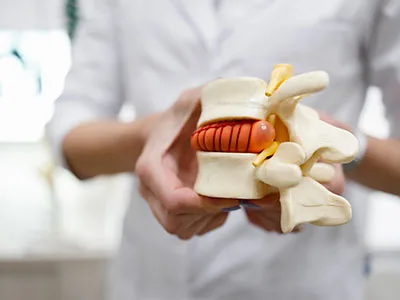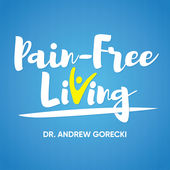
Can Disc Herniations be Healed? Absolutely!
Disc herniations can be a common source of discomfort, affecting individuals of various ages. In this article, we'll delve into the anatomy of discs, the causes of disc herniations, and how to identify and treat them effectively without unnecessary surgeries.
The Anatomy of Discs: A disc, nestled between the vertebrae in the spine, serves a crucial role in shock absorption and enhancing spinal mobility. Consisting of two layers—the tough outer layer or annulus fibrosis and the more liquid, jelly-like inner nucleus pulposus—discs undergo changes in consistency as we age.
Understanding Disc Herniations: Disc herniation occurs when there's an injury or lesion to the disc, typically involving a tear in the outside ring, the annulus fibrous. This tear allows the inner nucleus pulposus to herniate, or protrude, putting pressure on nerve roots that can lead to symptoms such as pain, numbness, and weakness.
Causes of Disc Herniations: Contrary to earlier beliefs that bending forward is the primary cause of disc herniations, recent research highlights the role of rotation. The forces required to tear the outer ring of the disc are more substantial with rotation, making it easier to understand why rotation plays a crucial role in disc injuries. This revelation emphasizes the importance of maintaining proper hip rotation to prevent disc herniations.
Diagnosing Disc Herniations: While MRIs can reveal disc herniations, it's essential to note that not everyone with a disc bulge or herniation experiences symptoms. Symptoms, including pain, numbness, and tingling, are more likely in individuals aged 35 or younger due to the pliability of disc material. Simple tests like the Straight Leg Raise Test can help identify if the sciatic nerve is under tension, indicating a potential disc herniation.
Can a Disc Herniation be Healed? Absolutely!
Conservative treatments, such as physical therapy that improves the mobility of the patient in three planes of motion, including rotation, have shown promising results in healing disc herniations within six months. Surgeries, on the other hand, have only a 50% success rate. The key to successful healing is understanding the initial cause of the disc herniation, addressing the breakdown or improper movement that led to the stress on the lower back.
Conclusion: Disc herniations are a common concern, but understanding their anatomy, causes, and effective treatment methods can empower individuals to make informed decisions about their health. By identifying and addressing the root cause, it's possible to heal disc herniations without resorting to surgery and prevent the recurrence of issues, ultimately leading to a healthier, pain-free life.
See when our next FREE Back Pain Relief workshop is and get all your back pain relief questions answered once and for all! Click here: Free Low Back Pain and Sciatica Workshop (thesuperiortherapy.com)
Get your FREE copy of Dr. Gorecki's book, "The Truth about Lower Back Pain" here: Low Back Pain Book



